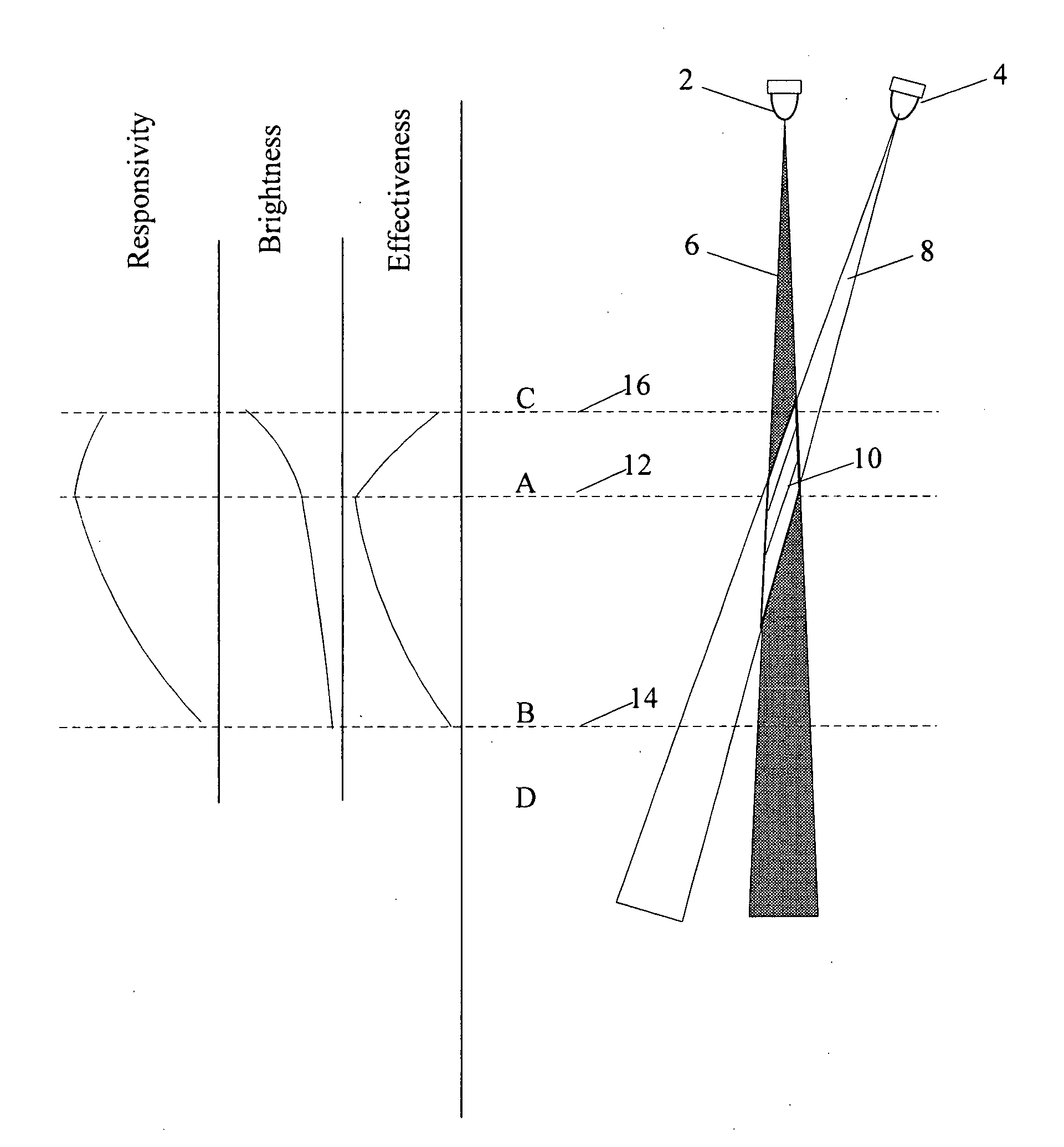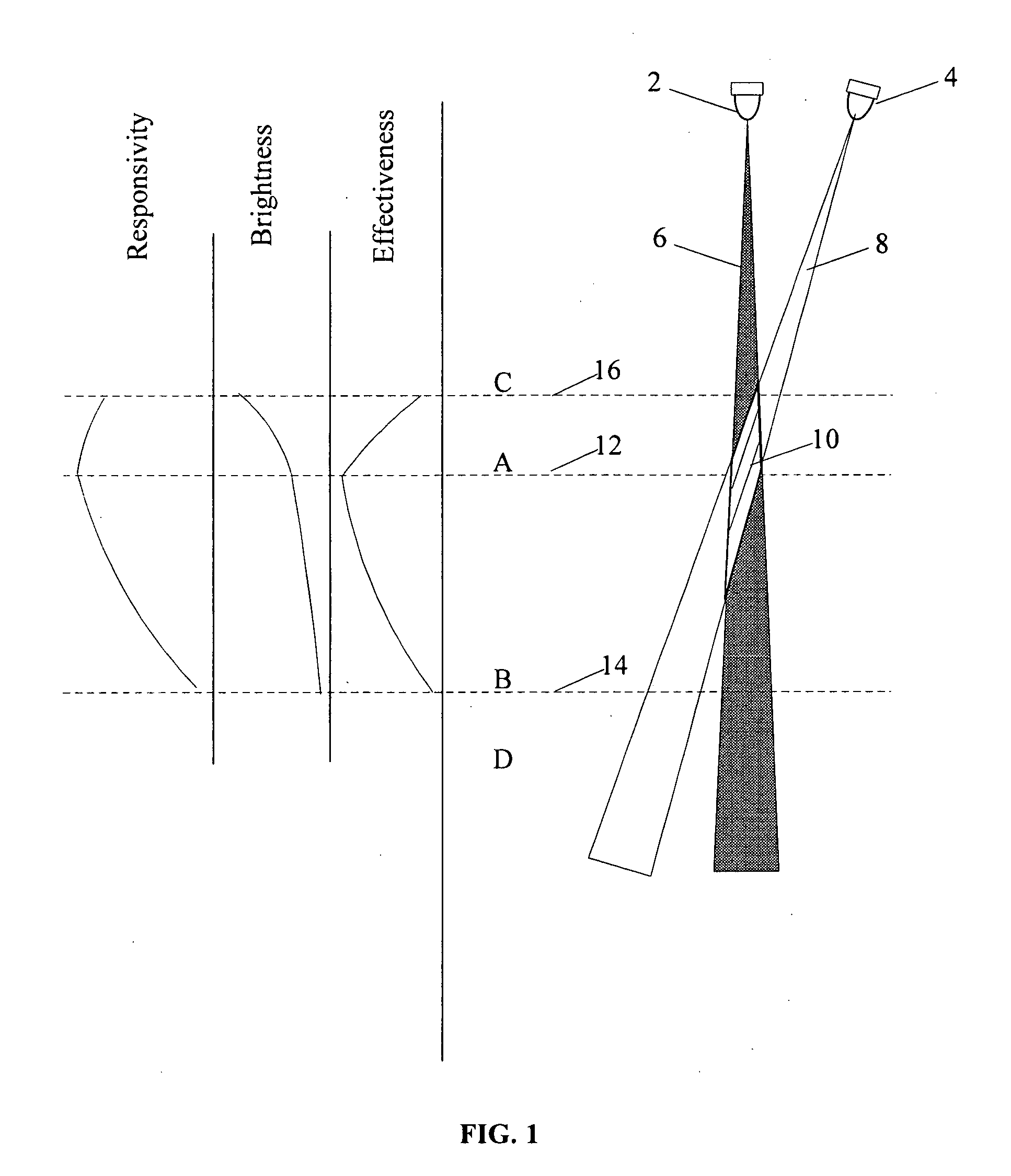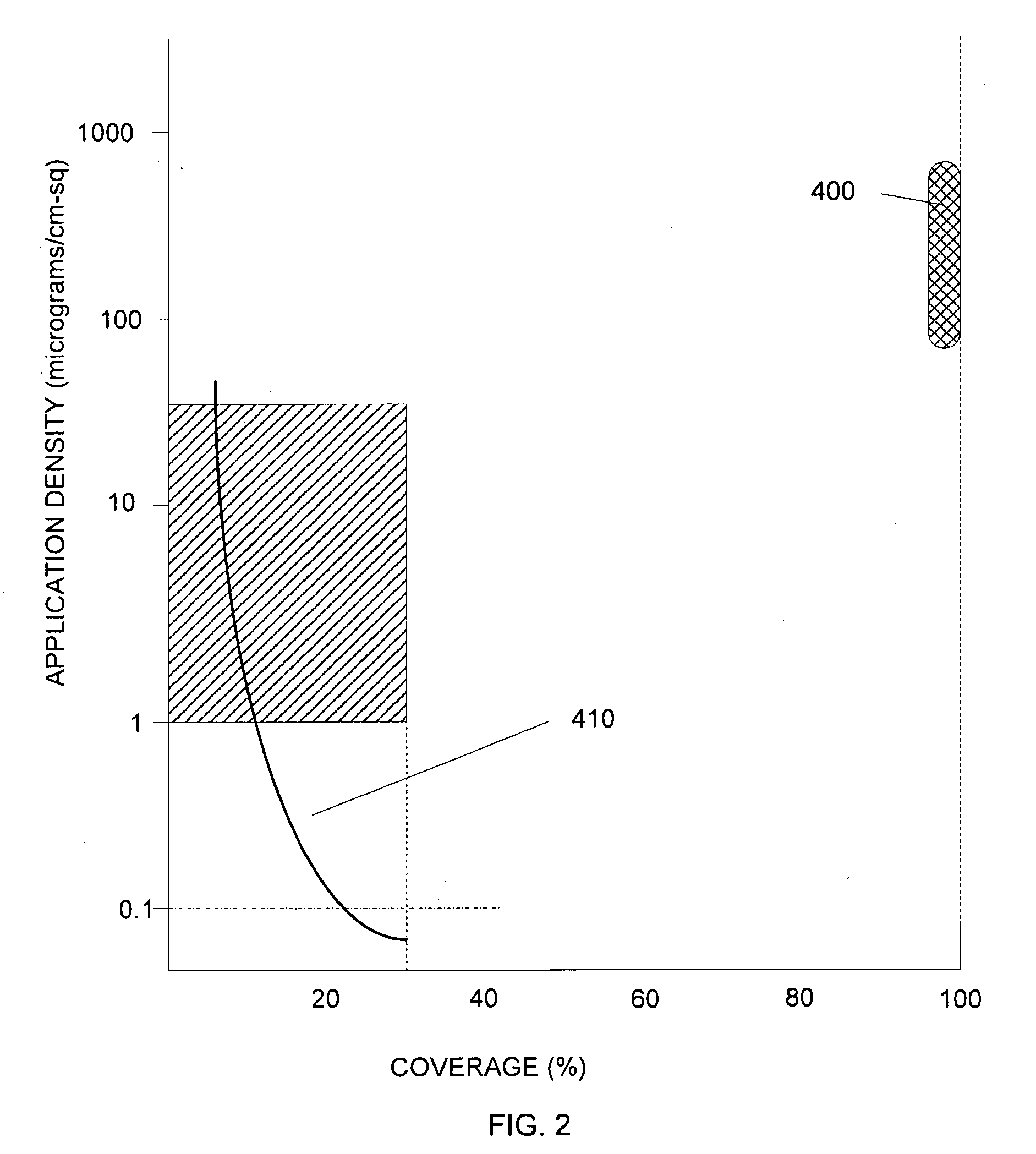Apparatus and method for the precision application of cosmetics
a cosmetic and precision technology, applied in the field of cosmetics, can solve the problems of not being practical for traditional cosmetic deposition, not being able to adapt digital technologies, and each prior art technique has limitations, so as to improve appearance, slow movement, and cover the face or other area more quickly
- Summary
- Abstract
- Description
- Claims
- Application Information
AI Technical Summary
Benefits of technology
Problems solved by technology
Method used
Image
Examples
example configuration
[0189]In this example, six pairs of LEDs and sensors are equally spaced around the example ring. The three pair of sensors are aimed at a first height of ⅜ inch, and an alternating three pair of sensors are aimed at a second height of 9 / 8 inch.
[0190]In one embodiment, it is desirable to cycle the sequence of lighting of the six LEDs so that each LED is on at a time when all other LEDs are off. As each of the first set of LEDs (L1, L2, and L3) is turned on, data from each of the first set of sensors (S1, S2, and S3) is acquired for each of the first set of LEDs in both an “ON” and “OFF” state. Then, as each of the second set of LEDs (L4, L5, and L6) is turned on, data from each of the second set of sensors (S4, S5, and S6) is acquired for each of the second set of LEDs. This sequencing can be accomplished by a timing circuit as discussed below, or by having each LED driven by a modulation function.
[0191]In this case, the device sequencing is based on 88 kHz so that standard audio equ...
example simulation
[0211]In one example simulation, LED factors include Intensity (I), Wavelength, Beam angle (Θ), radial distance from centerline (rL), the angular location from a reference axis (βL), and angle of aim (γL). The sensor factors include the photodiode sensitivity at the wavelength of the LED, the viewing angle (Θ), radial distance from centerline (rS), the angular location from a reference axis (βS), and angle of aim (γS). The local surface is described as a plane of interest located a distance (h) below the center of the ring, and having a first axis tilt (αx) and a second axis tilt (αy).
[0212]In this example, the plane of interest comprises a plurality of cells. Each LED projects a beam to the plane of interest, and that beam profile can be calculated at each cell center as the product of a Gaussian distribution component and a 1 / L2 component to account for the decrease in illumination per surface area as the distance L increases.
[0213]FIG. 39 shows a two-dimensional example of this t...
example 3
[0267]In this example, movements in each region 231 and 233 are not perfectly repetitive. The end points A and B are not the same position on each cycle, such as shown in FIG. 38.
[0268]The previous examples have been reading in one direction, and then applying RMA as the device is moved in the opposite direction. Other control strategies may be employed. For instance, one variation is to occasionally skip a leg so that the direction of read and scan is periodically reversed.
[0269]Another variation is to read an entire cycle and then compare readings and apply RMA during the next cycle.
Ellipsoidal Movement
[0270]The previous examples have discussed a back-and-forth eraser type movement. Other movements are also possible. Another type of repetitive movement is an ellipsoidal path as illustrated in FIG. 6A.
[0271]In an ellipsoidal path, predictive points at a particular point P1 include the point a full cycle back P2, and the point at half cycle back P3 as illustrate...
PUM
 Login to View More
Login to View More Abstract
Description
Claims
Application Information
 Login to View More
Login to View More - R&D
- Intellectual Property
- Life Sciences
- Materials
- Tech Scout
- Unparalleled Data Quality
- Higher Quality Content
- 60% Fewer Hallucinations
Browse by: Latest US Patents, China's latest patents, Technical Efficacy Thesaurus, Application Domain, Technology Topic, Popular Technical Reports.
© 2025 PatSnap. All rights reserved.Legal|Privacy policy|Modern Slavery Act Transparency Statement|Sitemap|About US| Contact US: help@patsnap.com



